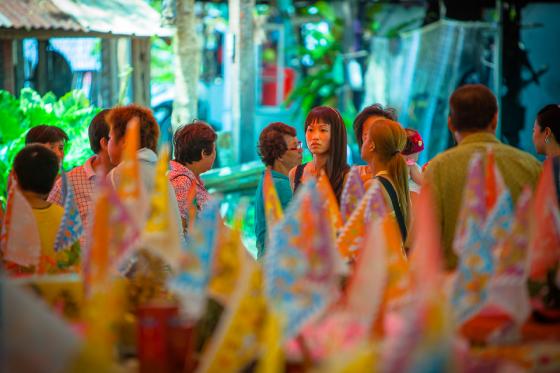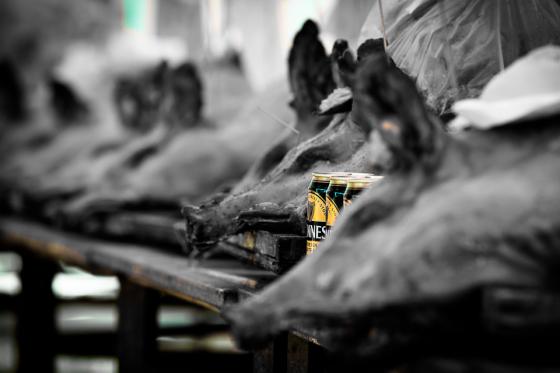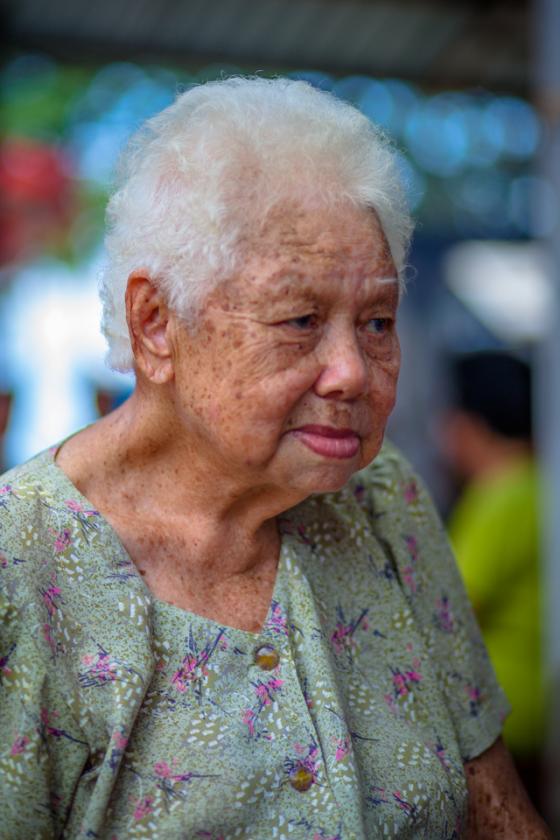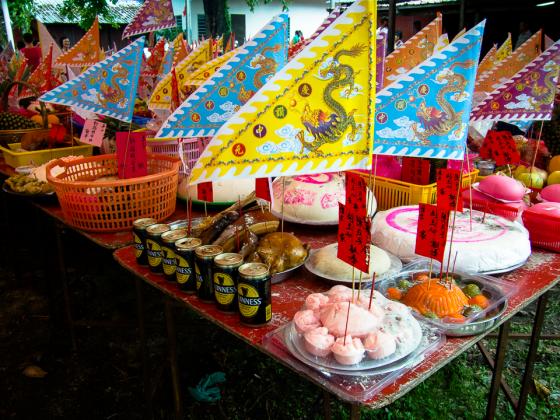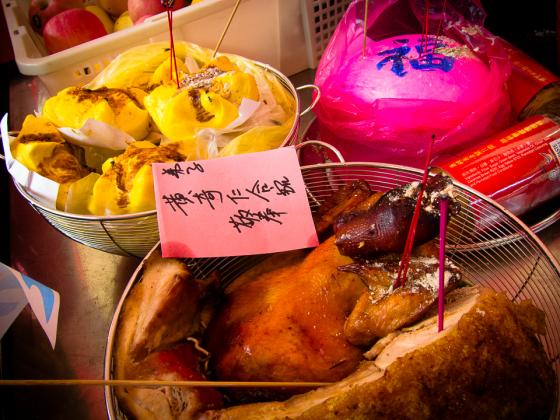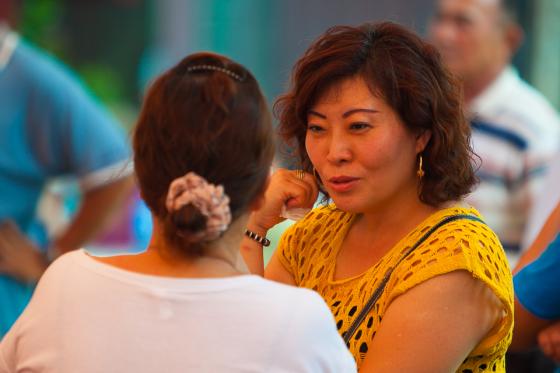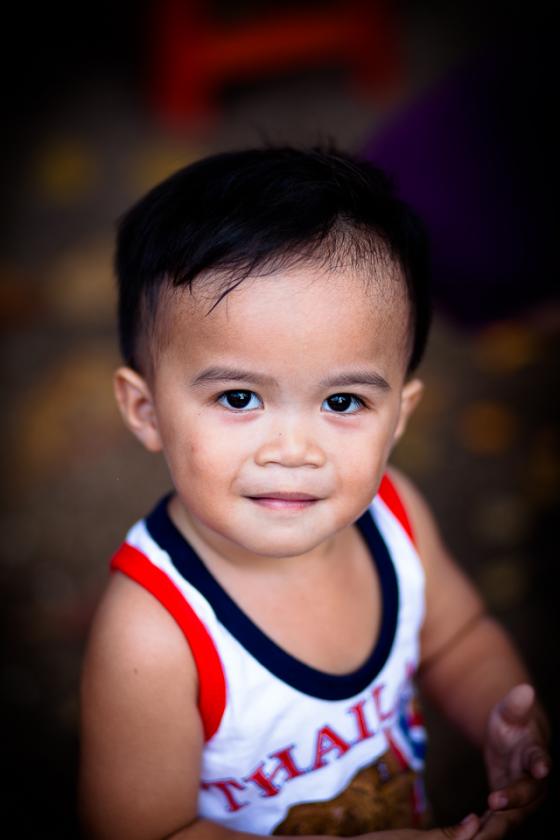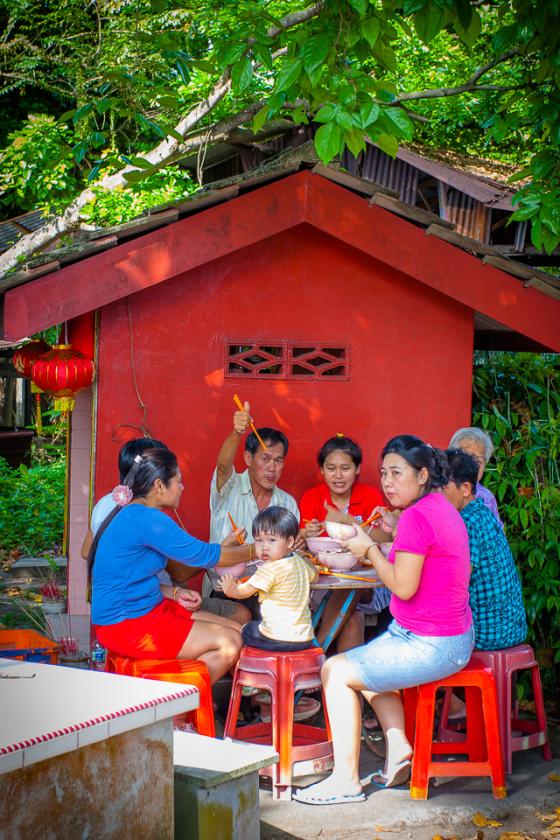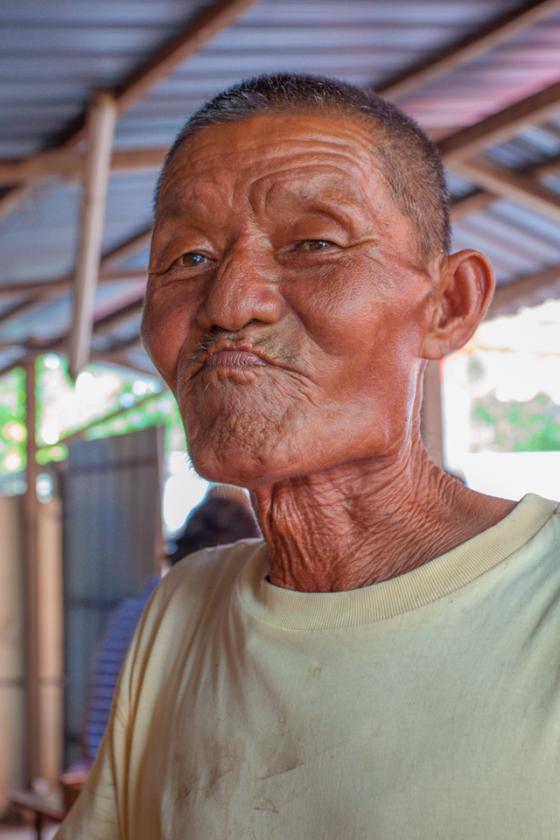"Hungry Ghost" Festival Communal Meal
Perhaps the most enjoyable part for many Malaysian Chinese during the Spirits of the 7th Month (aka "Hungry Ghost") Festival is the big communal meal that every active site holds.
An active site means—among other things—a place where there’s a temple or shrine of some sort (they’re nearly everywhere in Penang), a medium to lead sacerdotal duties, a stage & a Chinese opera troupe.
When the Chinese community around my town of Teluk Bahang, Penang hosts this, they wrap things up on one of the most auspicious days with their local medium performing all the necessary incantations—see my last blog here—and everyone assembles for a huge Chinese meal.
The women all pull together to prepare a feast decorated with Chinese flags.
No one’s selling life insurance policies to pigs a week before this event. My Chinese friends cook pork on this day like Americans cook turkey on Thanksgiving. In fact, there are so many bright red roasted pigs, that it makes photography challenging. I don’t usually like using this technique in my photos, but in this kind of situation I felt compelled to use it. These lines of roasted pigs is a signature feature of the Hungry Ghost Chinese communal feast, yet there’s such an overwhelming amount of red in any image of the table, that it’s hard to focus the eye on any subject. So, I decided to zero the saturation on all the red tones in the image, leaving the ubiquitous Guinness cans in color.
Senior Chinese women engage this event assuring that everything is done properly enough to fulfill the core traditions.
Decorative flags & signs adorn every dish.
Pork is not the only meat on the menu. Roast chicken & duck, Chinese cakes & bakpao type cakes covered in joyous red skin are served up by the truckload.
While the community medium is finishing the preliminary religious rites, Chinese women find this a fun time to socialize.
Local Chinese children anxiously wait for the go-ahead signal that says they can eat.
Their grandfathers watch carefully for the sign too, as some sneak a bite.
Finally the medium completes his offerings and the signal is given that the Chinese community can enjoy the food.
To outsiders it may at first seem strange that food “offered to the spirits” is consumed instead by humans. But it seems that my Chinese friends’ concept is vaguely like that of the Indonesian Javanese in their selamatan communal meals where food is offered to the spirits & they partake of it via its smell & via a token portion that’s put forward only for the spirits. But then the community partakes of the lion’s share of the food, thereby entering into a sort of fellowship with the spirits.
In any event, great-tasting food—like anywhere else—is something people jump at once it’s time to eat. Everyone eagerly grabs their portion & digs in.
Families gather under the big tent, or—as in this case—around a folding table beside a small shrine to enjoy their meal together.
The verdict seems unanimous—the meal at one of the Chinese Malaysian community’s most anticipated annual events is lip-smacking good!

